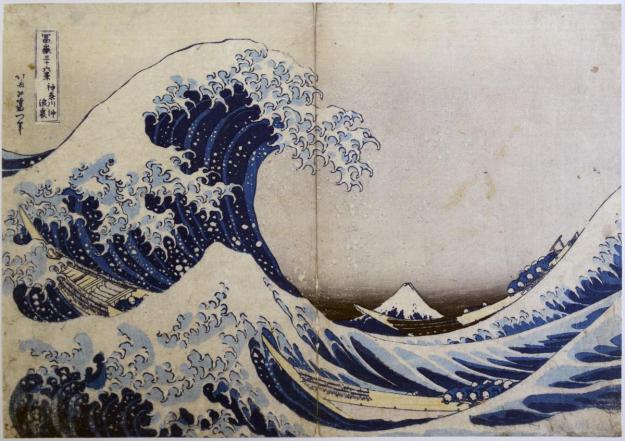- Reading Public Museum
Open 11a-5p DailyAdmission - Neag Planetarium
Show ScheduleAdmission - Arboretum
Open everyday from sunrise to sunset

Perhaps the most famous work in all of Asian art, Hokusai’s The Great Wave off the Coast of Kanagawa is well known throughout the world. This print is the first in a series entitled Thirty-Six Views of Fuji, a series of thirty-six prints showing different views of the famous Mount Fuji. Here Hokusai has chosen not to feature the mountain, but depicts it off in the distance, behind the wave. He began the series in 1830 when he was 70 years old. The use of the newly affordable Berlin blue pigment, which Hokusai used to achieve the striking blue hue seen in this print and throughout the series, is also remarkable. Less noticeable are the three boats, all in danger of the wave about to crash down on them.
Hokusai was a popular artist, and his designs were often commissioned for many reprint editions. Just as in the printing of books, earlier additions of the prints are more valuable, and each edition had a certain number of printings. At the time of its first edition, thousands of copies would have been made and sold cheaply. There were even a few changes with each successive printing: for example, this print is from an earlier edition, which we can tell from the fact that it has a blue key block (meaning that the outlines in the image were inked in blue instead of black).
Because of the nature of a woodblock print, there were many copies of The Great Wave printed in the nineteenth century. As such, many museums throughout the world have a copy of this famous print.